SUMMARY
This is AI generated summarization, which may have errors. For context, always refer to the full article.
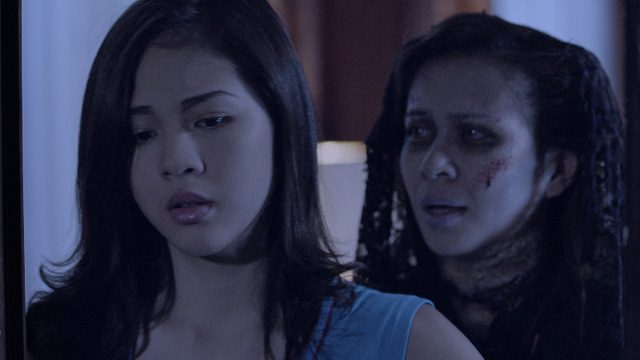
MANILA, Philippines – There are absolutely no unnecessary pretensions here. Jun Lana’s Haunted Mansion is as original as its title is imaginative.
Don’t make the mistake of belittling the film though, since it’s quite something. Set in the same high school world where bullies roam to torment the weak and men inexplicably find themselves fighting over girls who don’t seem to know how beautiful they are, Lana’s film takes a lot of time to explore what’s already old and familiar.
In doing so, he suspiciously takes his audience to a place of comfort, only to gracefully surprise them with something gleefully diabolical.
Of third eyes and love triangles
Ella (Janella Salvador) sees ghosts.
In a high school setting, such a unique gift can only bring trouble, and in Ella’s case, trouble is the gang of mean girls (Ingrid dela Paz, Devon Seron, and Eliza Pineda) who would do anything just to pester her.

The upside of her peculiar high school existence is that she is the subject of affection of two boys – Adrian (Marlo Mortel), a childhood friend who always had feelings for her, and Jacob (Jerome Ponce), the school’s heartthrob.
Everything #MMFF2015
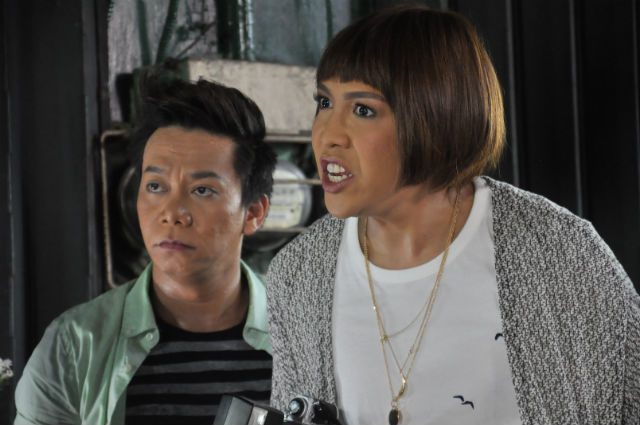 READ:
READ:- 8 entries revealed: MMFF 2015 movie lineup
- IN PHOTOS: MMFF 2015 Parade of Stars with AlDub, JaDine, KimXi, Kris, and more
- ‘Honor Thy Father’ review: Honoring its audience
- ‘Beauty and the Bestie’ review: An insensitive mix
- ‘My Bebe Love: #Kilig Pa More’ review: Tolerable at best
- ‘All You Need is Pagibig’ Review: Love Overdose
- ‘Nilalang’ review: Two girls, one cop
- ‘Buy Now, Die Later’ review: The price is right
- ‘Walang Forever’ review: Truth in escapism
The titular mansion here is a retreat house where Ella and her classmates are to spend a few days for prayerful reflection. As it turns out, the ornate mansion has an ominous past involving upper crust sisters (Iza Calzado and LJ Reyes) and their illicit entanglements with a commoner (Joem Bascon).
Mix mischievous teens and a house brimming with vengeful ghosts and things will eventually get messy. Haunted Mansion follows its formula religiously, except that its manner of doing so raises suspicions that are grander than what is readily seen.
Strangely elegant
Haunted Mansion opens with a sequence that has a boy enter a mansion only to be spooked by the traditional frights that is to be expected from a low-rent horror flick. As it turns out, the introduction is but an urban legend straight out of the immature minds of one of the characters. The actual film has markedly different feel from its aptly lousy introduction. In fact, the film is strangely elegant, a rarity for films like this, which is of supposedly meager ambitions.
Carlo Mendoza’s cinematography is wonderfully precise, lending credibility to the atmosphere that Lana seeks to create. Mendoza knows how to use both light and shadows to evoke a certain sense of unease. The film’s maturely constructed imagery is assisted by a sound design that does not rely on noise and glaring orchestrations to scare.
While Lana still employs shock tactics to keep the film’s audience at the edge of their seats, the film is nevertheless deliberate in its pacing. It creeps meaningfully, initially concentrating on the banal concerns of its characters before thrusting its purpose of betraying innocent beliefs with a climax that haphazardly has the lives of all the characters, whether they are good or bad, endangered with explicit savagery.
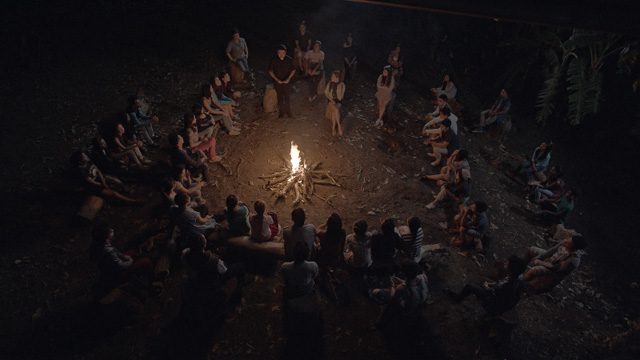
Secular and cynical
Haunted Mansion is most pleasurable in its 3rd half, where the world that Lana has painstakingly created fittingly explodes and crumbles in a masterful move of supernatural violence where salvation is a farfetched fantasy.
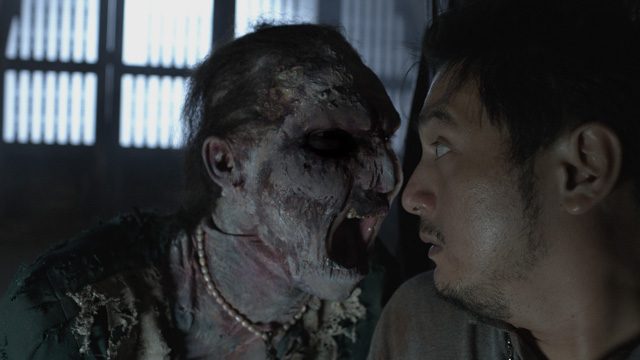
The film almost feels like it has no allegiance to religion, a facet that has always been a recurring element in Filipino horror films, a source of comfort and predictability, so to speak. Lana peppers his picture with a bevy of religious artifacts. He even proposes that the film’s horrors happen during an overtly religious activity, where kids are supposedly in the process of spiritual betterment.
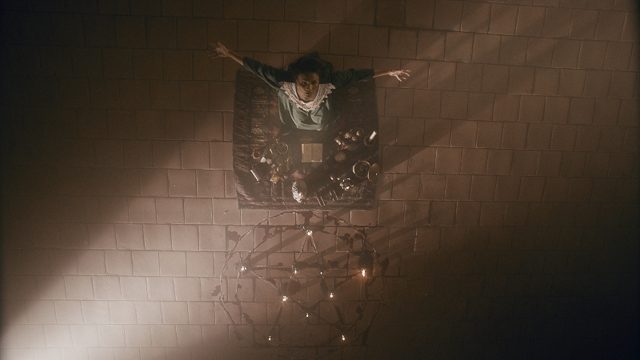
Haunted Mansion subverts and shatters religious expectations, with characters begging for salvation from religious artifacts only to be betrayed. Despite all the overt depictions of religion, the film is indisputably secular, with only the characters’ acts and the palpable evil of the mansion as true and definite. That all this cynicism is draped in a story that is all too mundane and commonplace to be of real merit is the film’s greatest conceit. – Rappler.com
 Francis Joseph Cruz litigates for a living and writes about cinema for fun. The first Filipino movie he saw in the theaters was Carlo J. Caparas’ Tirad Pass. Since then, he’s been on a mission to find better memories with Philippine cinema. Profile photo by Fatcat Studios
Francis Joseph Cruz litigates for a living and writes about cinema for fun. The first Filipino movie he saw in the theaters was Carlo J. Caparas’ Tirad Pass. Since then, he’s been on a mission to find better memories with Philippine cinema. Profile photo by Fatcat Studios
Add a comment
How does this make you feel?
There are no comments yet. Add your comment to start the conversation.